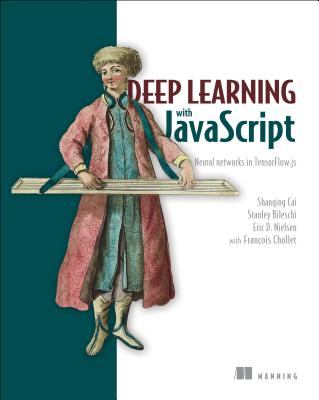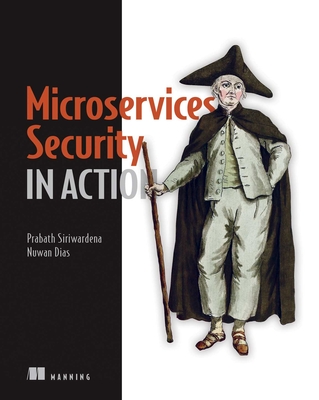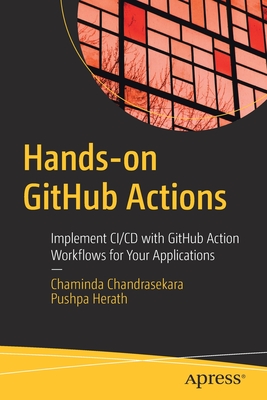買這商品的人也買了...
-
 $2,280Working Effectively with Legacy Code (Paperback)
$2,280Working Effectively with Legacy Code (Paperback) -
 Spring in Action, 4/e (Paperback)
Spring in Action, 4/e (Paperback)$1,900$1,805 -
 $1,520Getting Started with Bluetooth Low Energy: Tools and Techniques for Low-Power Networking (Paperback)
$1,520Getting Started with Bluetooth Low Energy: Tools and Techniques for Low-Power Networking (Paperback) -
 Arduino 官方正版 Genuino 101
Arduino 官方正版 Genuino 101$1,700$1,700 -
 Raspberry Pi 3 Model B+ (UK製)
Raspberry Pi 3 Model B+ (UK製)$4,620$4,389 -
 JVM Performance Engineering: Inside OpenJDK and the HotSpot Java Virtual Machine (Paperback)
JVM Performance Engineering: Inside OpenJDK and the HotSpot Java Virtual Machine (Paperback)$1,980$1,881 -
 晉昇軟體最高殿堂:Jenkins2 持續整合大師之路
晉昇軟體最高殿堂:Jenkins2 持續整合大師之路$600$474 -
 Deep Learning with JavaScript: Neural Networks in Tensorflow.Js
Deep Learning with JavaScript: Neural Networks in Tensorflow.Js$1,650$1,568 -
 JavaScript 技術手冊
JavaScript 技術手冊$560$442 -
 Building a Future-Proof Cloud Infrastructure: A Unified Architecture for Network, Security and Storage Services (Paperback)
Building a Future-Proof Cloud Infrastructure: A Unified Architecture for Network, Security and Storage Services (Paperback)$1,998$1,898 -
 Microservices Security in Action
Microservices Security in Action$1,980$1,881 -
 Java SE 14 技術手冊
Java SE 14 技術手冊$680$537 -
 Parallel and High Performance Computing (Paperback)
Parallel and High Performance Computing (Paperback)$2,450$2,328 -
 $1,425Domain Storytelling: A Collaborative, Visual, and Agile Way to Build Domain-Driven Software (Paperback)
$1,425Domain Storytelling: A Collaborative, Visual, and Agile Way to Build Domain-Driven Software (Paperback) -
 $1,840Multithreaded JavaScript: Concurrency Beyond the Event Loop
$1,840Multithreaded JavaScript: Concurrency Beyond the Event Loop -
 $2,475Software Architecture: The Hard Parts: Modern Trade-Off Analyses for Distributed Architectures (Paperback)
$2,475Software Architecture: The Hard Parts: Modern Trade-Off Analyses for Distributed Architectures (Paperback) -
 Structure and Interpretation of Computer Programs: JavaScript Edition (Paperback)
Structure and Interpretation of Computer Programs: JavaScript Edition (Paperback)$2,680$2,626 -
 $1,824Mastering API Architecture: Design, Operate, and Evolve Api-Based Systems (Paperback)
$1,824Mastering API Architecture: Design, Operate, and Evolve Api-Based Systems (Paperback) -
 OAuth 2.0 從入門到實戰:利用驗證和授權守護 API 的安全
OAuth 2.0 從入門到實戰:利用驗證和授權守護 API 的安全$600$510 -
 $2,233Functional and Concurrent Programming: Core Concepts and Features
$2,233Functional and Concurrent Programming: Core Concepts and Features -
 $1,805Functional Design: Principles, Patterns, and Practices (Paperback)
$1,805Functional Design: Principles, Patterns, and Practices (Paperback) -
 OpenTelemetry 入門指南:建立全面可觀測性架構(iThome鐵人賽系列書)【軟精裝】
OpenTelemetry 入門指南:建立全面可觀測性架構(iThome鐵人賽系列書)【軟精裝】$750$375 -
 $2,043Learning Systems Thinking: Essential Nonlinear Skills and Practices for Software Professionals (Paperback)
$2,043Learning Systems Thinking: Essential Nonlinear Skills and Practices for Software Professionals (Paperback) -
 Collaborative Software Design: How to Facilitate Domain Modeling Decisions
Collaborative Software Design: How to Facilitate Domain Modeling Decisions$1,980$1,881 -
 $2,119Mastering Opentelemetry and Observability: Enhancing Application and Infrastructure Performance and Avoiding Outages
$2,119Mastering Opentelemetry and Observability: Enhancing Application and Infrastructure Performance and Avoiding Outages
相關主題
商品描述
Based around a theme of the construction of a game engine, this textbook is for final year undergraduate and graduate students, emphasising formal methods in writing robust code quickly. This book takes an unusual, engineering-inspired approach to illuminate the creation and verification of large software systems. Where other textbooks discuss business practices through generic project management techniques or detailed rigid logic systems, this book examines the interaction between code in a physical machine and the logic applied in creating the software. These elements create an informal and rigorous study of logic, algebra, and geometry through software. Assuming prior experience with C, C++, or Java programming languages, chapters introduce UML, OCL, and Z from scratch. Extensive worked examples motivate readers to learn the languages through the technical side of software science.
- Takes readers through the creation of a complete software package based around a theme of the construction of a game engine
- Teaches software engineering as engineering, rather than mathematics or business
- Illustrates extensive worked examples with 1000 lines of code
商品描述(中文翻譯)
這本教科書圍繞遊戲引擎的建構主題,適合最後一年本科生和研究生,強調使用正式方法快速編寫穩健的代碼。本書採取了一種不尋常的、受工程啟發的方法,來闡明大型軟體系統的創建和驗證。與其他教科書通過通用的專案管理技術或詳細的嚴謹邏輯系統來討論商業實踐不同,本書考察了物理機器中的代碼與創建軟體時所應用邏輯之間的互動。這些元素通過軟體創造了一種非正式而嚴謹的邏輯、代數和幾何學的研究。假設讀者已具備 C、C++ 或 Java 程式語言的先前經驗,各章節從零開始介紹 UML、OCL 和 Z。大量的實作範例激勵讀者通過軟體科學的技術面來學習這些語言。
- 帶領讀者創建一個完整的軟體包,圍繞遊戲引擎的建構主題
- 將軟體工程視為工程,而非數學或商業
- 以 1000 行代碼展示大量的實作範例
作者簡介
Bruce Mills, University of Western Australia, Perth
Bruce Mills holds a Ph.D. in computer science and mathematics from the University of Western Australia, Perth. He has twenty years of experience in the industrial electronics and software fields, and as a lecturer in his native country, Wales, and the Middle East. Dr Mills is the author of Theoretical Introduction to Programming (2010).
作者簡介(中文翻譯)
布魯斯·米爾斯,西澳大利亞大學,珀斯
布魯斯·米爾斯擁有西澳大利亞大學(University of Western Australia, Perth)計算機科學和數學的博士學位。他在工業電子和軟體領域擁有二十年的經驗,並曾在他的故鄉威爾斯和中東擔任講師。米爾斯博士是《程式設計的理論介紹》(Theoretical Introduction to Programming, 2010)的作者。
目錄大綱
Part I. Fundamentals:
1. Arithmetic
2. Logic
3. Algebra
4. Diagrams
Part II. Language:
5. UML
6. OCL
7. Z
8. Logic
9. Java
Part III. Practice:
10. Implementation
11. State transformation
12. Plain text
13. Natural language
14. Digital geometry
15. Building dungeons
16. Multiple threads
17. Security.
目錄大綱(中文翻譯)
Part I. Fundamentals:
1. Arithmetic
2. Logic
3. Algebra
4. Diagrams
Part II. Language:
5. UML
6. OCL
7. Z
8. Logic
9. Java
Part III. Practice:
10. Implementation
11. State transformation
12. Plain text
13. Natural language
14. Digital geometry
15. Building dungeons
16. Multiple threads
17. Security.































